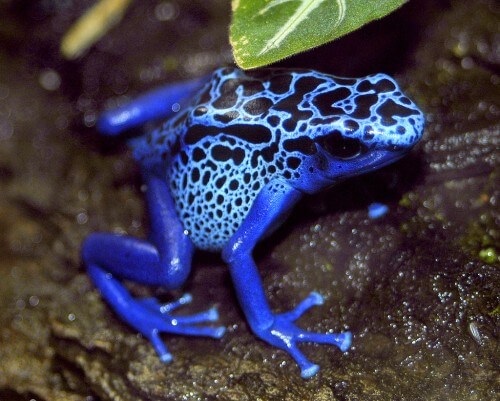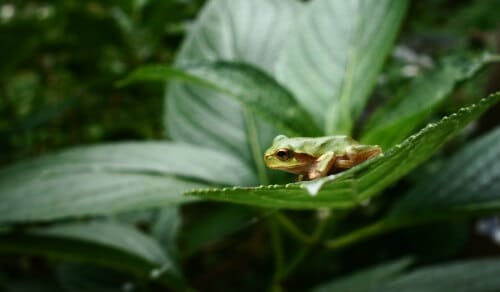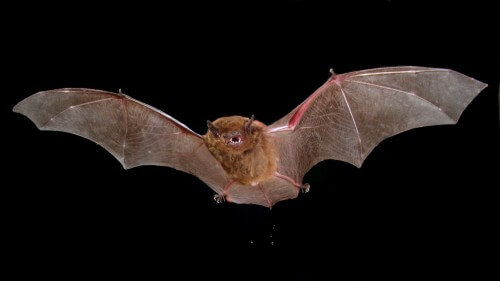Frogs that manage to stick to particularly slippery surfaces and bats that use their hair to navigate - what else can humans learn from animals in the field of transportation?

Lehi Barak and Daniel Mader, Zveta - Science and Environment News Agency
In the 15th century, at the height of the Renaissance, the young Leonardo da Vinci dreamed of flying in the sky like the birds. In order to realize his dream, da Vinci spent his time carefully observing and investigating the birds in flight, and during his lifetime he had time to design several different models of aircraft based on his findings. 400 years later, the Wright brothers, known as the first to successfully build and fly a motorized and manned airplane, did exactly the same thing - watched the birds. Based on old blueprints of failed airplane models, including da Vinci's, the Wright brothers finally managed to touch the sky and fly their first airplane in 1903. Both da Vinci and the Wright brothers, without realizing it, designed the aircraft invented according to the principles of biomimicry: imitating life.
written in leather
The poison dart frog that lives in the area of the equator in South America, is a species of the dendrobate family, which is characterized by colorful and glowing skin that is decorated in shades ranging from orange and yellow to blue and purple. This spectacular animal, which is only a few centimeters long, is able to secrete a powerful poison through tiny holes located on its outer skin.
Researchers from the Faculty of Materials and Energy Engineering at Arizona State University in the USA published a study at the beginning of the year which reviews their intriguing connected development: a two-layer coating that serves as an additional "skin" for planes and is designed to prevent the accumulation of ice on the plane. The ice may jeopardize the normal course of flight and is considered a high risk factor for aircraft accidents. When rain freezes on the wings of the plane, it may damage their proper functioning, cause a loss of control over the speed and even lead to difficulties and disturbances during takeoff and landing.
The new development was based on observing the poison secretion mechanism of the poison dart frog, which stores its poison in an inner layer under the outer skin and releases it only when it feels threatened. Similar to the frog's skin, the aircraft coating consists of two layers: an inner layer that contains an anti-icing liquid, and an outer layer that consists of a powerful hydrophobic (water-repellent) material. When the outer layer meets water, the rain or snow drops slide off the surface and thus the probability that the water drops will freeze and accumulate as ice blocks on the surface of the plane is significantly reduced. In addition, the outer layer contains special holes from which the anti-icing liquid housed in the inner coating layer can emerge. The inner layer comes into action when the outer layer "fails" to remove the hazard and water or ice penetrates through the holes into the inner layer. The contact between the water and the inner layer starts a chain of events at the end of which the anti-icing liquid thaws the ice and melts it.
The researchers tested the system in harsh weather conditions of rain, snow, and fog at freezing temperatures, and showed that the two-layer coating demonstrates great success in preventing the accumulation of ice on the plane up to 10 times compared to only one outer hydrophobic coating layer.
Today, the accepted method for removing and preventing the accumulation of water, snow and ice is to spread various chemicals on the plane that lower the freezing point. In addition to the high price of the materials from the ice melts, the method is based on the dispersion of the materials in all weather conditions regardless of the actual accumulation of ice. These chemicals may find their way into the drinking water and contaminate it. The outstanding advantage of the new two-layer coating method is the preventive treatment of the problem: the inner layer actually constitutes a sophisticated backup system that secretes the anti-icing material only after an actual encounter with ice, and is therefore more economical and environmentally friendly. This innovative technology is still being tested under laboratory conditions and has not yet come into use.

Frog or Spiderman?
In addition to the dangerous poisonous dart frog, innocent and peace-loving frogs also inspire innovative technological developments. Many species of frogs spend most of their time on trees and hardly ever come down to the ground. These tiny frogs, which you can hold in the palm of your hand, reach a size of only seven centimeters, this is so that the leaves of the tree can bear their weight. Like the superhero Spider-Man, they are able to stick firmly to any surface and move freely and confidently on it, even at a completely vertical angle. This wonderful ability of these frogs challenges science and is an inspiration for smart technological developments.
A group of researchers from Europe who studied the structure of the frog's finger using microscopic methods presented an elaborate geometric structure: on top of each finger there are many dense structures in the shape of hexagons measuring ten micrometers separated by channels only one micrometer wide. These hexagonal cells enable a powerful adhesive effect of friction and adhesion to wet surfaces using adhesion force (ie, the ability of two different surfaces to stick tightly together), so that each finger is actually a gripping surface in itself. When the frog walks on a wet surface, it secretes a mucous substance, which is uniformly distributed over the surface of the entire finger through the canals. In fact, the adhesion mechanism of the tree frogs is very reminiscent of the adhesion of a chilled glass of beer to the bottom of the paper on which it is placed.
The group of researchers also presented an advanced ability of the frog to protect its adhesion surfaces from wear: while on some surface, the frog moves its leg back and forth and spreads the gel secreted from the canals on the surface, while at the same time removing dust or small particles from the surface it is holding. The constant movement and the increased production of the mucus allow the removal of the dirt, in order not to lose the ability to cling. This is similar to using a band-aid: if you try to use the same band-aid over and over again, it will collect dust grains and eventually lose its adhesiveness. The cleaning mechanism is an inspiration for further biomimicry developments in the fields of medicine, robotics and architecture.
This research is also important in the field of transportation. The ability of the frogs to cling to wet surfaces through a special geometric structure and constant movement, while removing the dirt, is an inspiration for the creation of safer car tires, which are produced using a similar method: dense bumps and channels between them. When the car drives on a wet road, the water splashed by the rain or from the wet road itself hits the bumps on the tires, and flows out from the channels between the tire bumps. The structure of the tire creates high friction and strong adhesion between the tire and the road, and leads to a significant decrease in the chance of slipping and an accident when driving on a wet road. Such tires are already sold and are used as winter tires in cold countries.

Night acrobats
Bats are known as flying nocturnal acrobats. When we think of the amazing abilities of bats to catch a flying insect at night, or to fly through a tangled tree to reach a small fruit in the dark, we attribute this to their echolocation ability (orientation in space using sound - sonar).
However, researchers have discovered another highly developed sense in those flying mammals: special sensory cells, which are attached to tiny hairs. Hairs move according to the air pressure and the wind acting on them. The information that comes from those sensory cells allows bats to change the shape of their wings in a fraction of a second, perform complicated maneuvers quickly, hover, dive, catch their agile prey and evade obstacles.
When the sensory hairs were temporarily disabled by the researchers, the bats lost their amazing abilities and became clumsy flyers. Besides an important role in flight stability, these sensory hairs also play an important role in touch: bats use their wings as both legs and hands. They can walk on all fours when they fall on the floor, use their wings to hug their young, and sometimes the wings are also used for climbing or holding. A different neural action pattern allows the bat to distinguish between air currents and pressures during flight, and contact with a branch or a flying insect.
Sensory hairs are common throughout the animal world. Cats, for example, use their whisker hairs to feel their way through narrow and complicated places. Even with us humans, although our sense of touch is dull compared to that of many animals, hairs serve as a whisper. The current research helps us to understand the complex evolutionary changes that the bat went through from a walking mammal to a flying mammal and it is possible that these discoveries will find a place in the improvement of autonomous flying vehicles.
As you can see, the biomimicry approach allows us to copy the special and wonderful mechanisms that animals have developed throughout the years of evolution and convert them into solutions to engineering puzzles of the modern world. The next time you come across a natural phenomenon that fascinates you, take a few moments to observe, and remember that nature is a great teacher. The solutions to your problems may be right under your nose.
More of the topic in Hayadan:
- Walking on water - the robotic gospel
- A robotic leapfrog inspired by the frog
- Aviation inspired by bats

One response
The articles of "Angle - a news agency for science and the environment" are interesting,
But maybe the writers can still be taught the difference between:
Kind to sex to family?
Maybe the writers will succeed in learning the accepted sorting method in zoology?
And then they will give up the non-existent "species"?